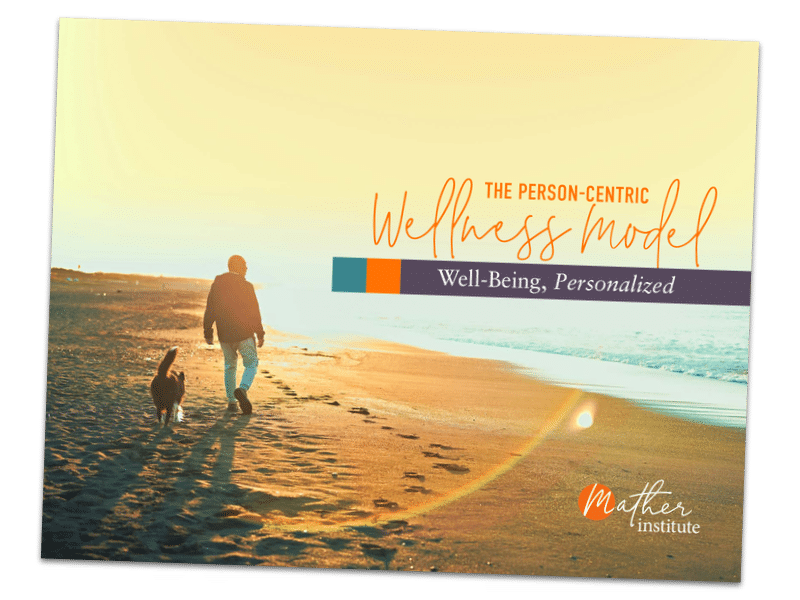BRINGING SCIENCE
to Individualized Well-Being

PERSON-CENTRIC WELLNESS MODEL
A RESEARCH-BACKED PERSPECTIVE ON MODERNIZED WELLNESS
Since 1976, the Six Dimensions of Wellness has been the standard well-being model within the senior living industry — and it has certainly served countless people and society well. For decades, providers have used this framework to approach wellness from a holistic perspective and provide older adults with opportunities, activities, and programs that lead to fulfillment.
Needless to say, times have changed. And with them, so has the way we manage wellness.
At Mather Institute, we recognized this as an opportunity to enhance how our industry addresses the needs and desires of today’s older adults. The result? Our Person-Centric Wellness Model, a personalized philosophy that takes an important factor into account: that wellness looks different to everyone.
An all-encompassing approach to full-spectrum wellness
We’ve long known that true wellness transcends a person’s physical health, and that achieving whole-person well-being requires taking into account many facets of each person’s unique identity.
Our overarching model considers internal and external factors and three distinct drivers, resulting in a foundation for anyone committed to providing or promoting individualized wellness or wellness services.
Modeling unique needs and desires
Context is a key player in self-fulfillment
Primarily drawn from Self-Determination Theory and the Social-Ecological Model, the Person-Centric Wellness Model considers the many factors that contribute to a person’s quality of life on three levels:
Individual
Personal interests, values, beliefs, and attitudes
Community
Social networks and neighborhood resources
Society
Politics, the economy, and culture
Achieving individual wellness starts with straight ‘A’s
While each person’s wellness is unique to their experiences and influences, the Person-Centric Wellness Model identifies three contributing drivers that play a significant role:
Autonomy
We thrive when empowered to make our own choices. Even when we rely on others, being able to make decisions for ourselves is a key driver of personal well-being.
Achievement
Confidence comes from doing. From learning. From knowing. A powerful way to foster wellness is accomplishment on our own terms.
Affiliation
One of the most basic human needs is to belong. To feel a part of something bigger than ourselves. Being connected to other people is critical to achieving well-being.
